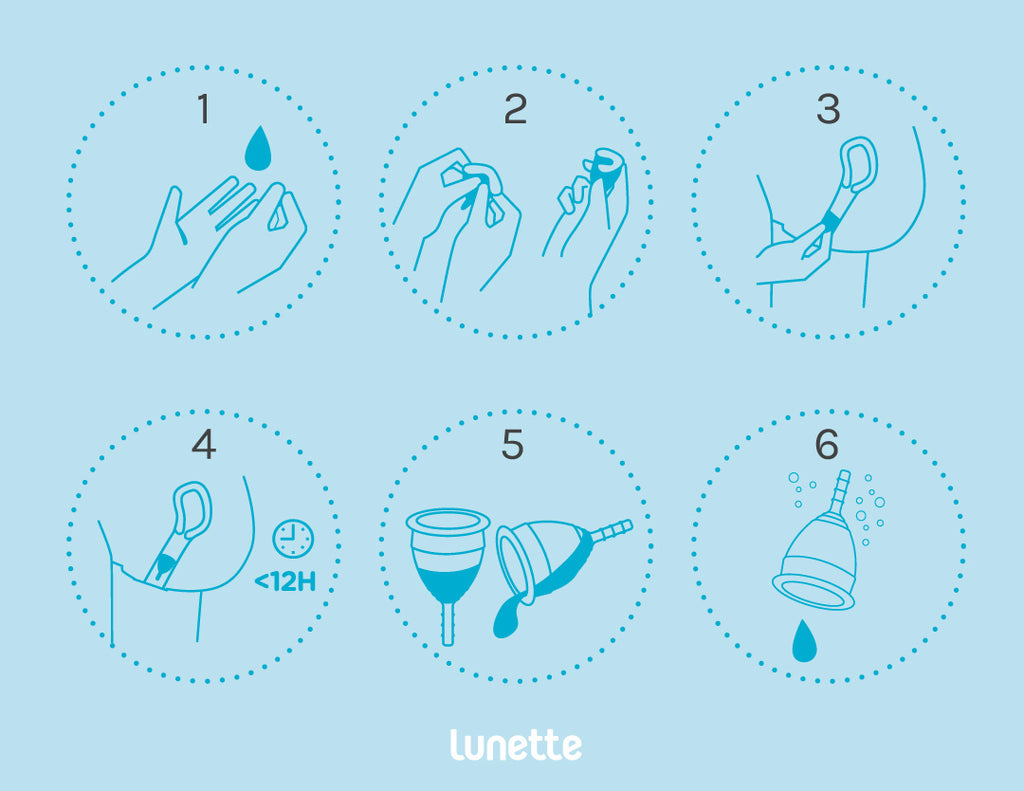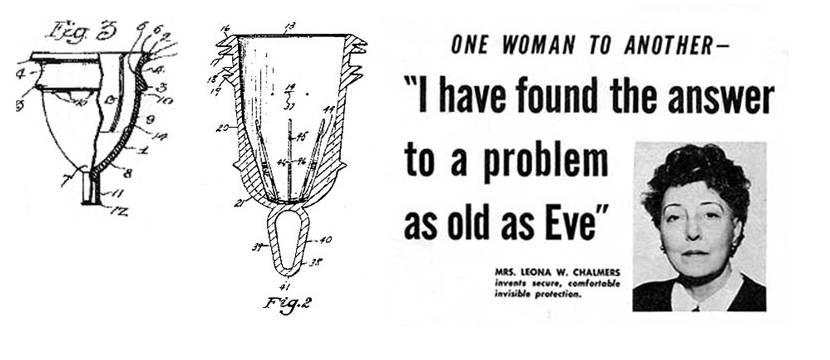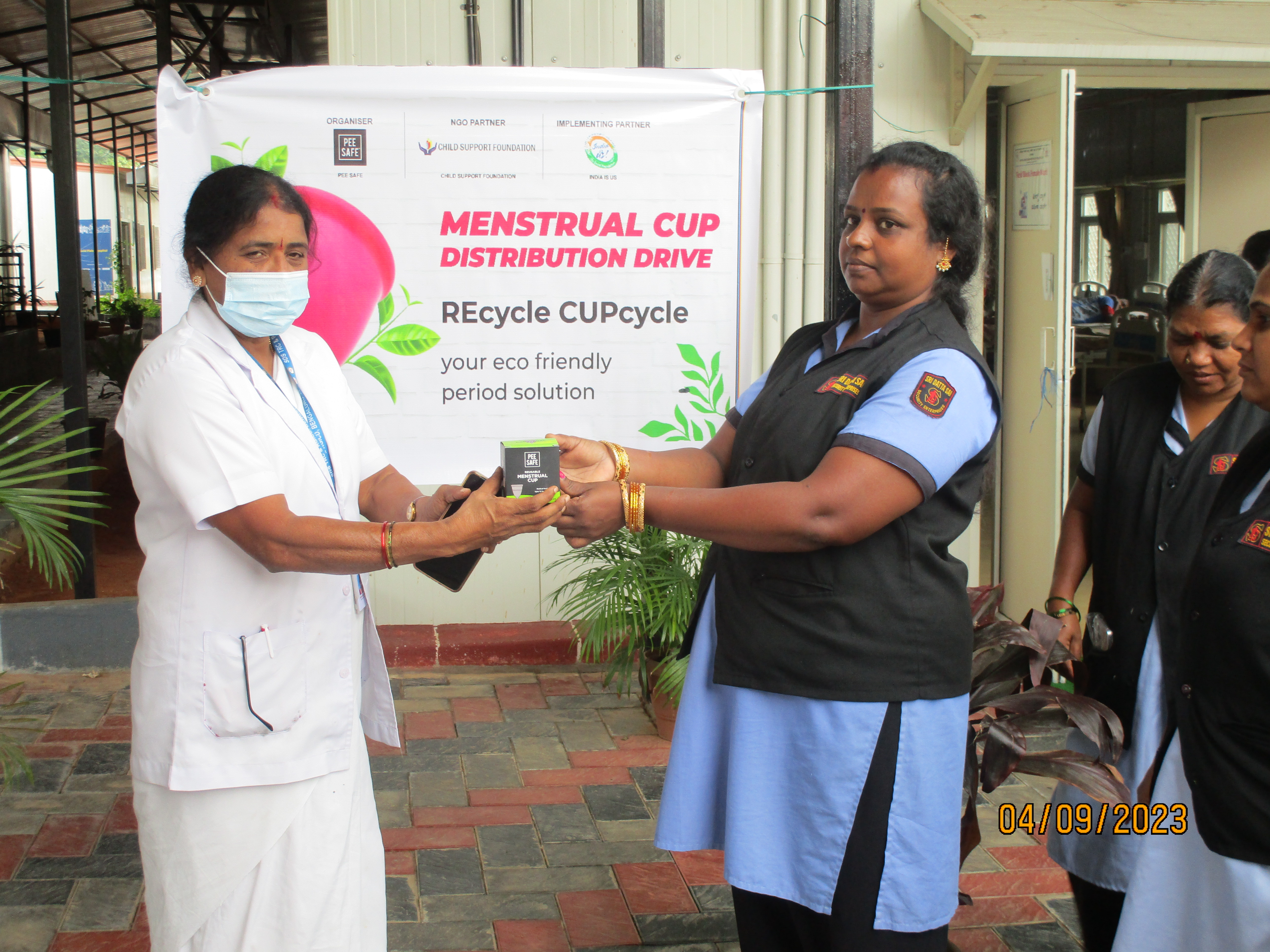Introduction:
Menstrual Cups: A Sustainable Path to Empowerment
 In today’s world, where sustainability and empowerment are increasingly becoming focal points of global initiatives, menstrual cups emerge as a beacon of hope and practicality. At the heart of the Meda Foundation’s mission lies a commitment to sustainable development and community empowerment. We believe that access to essential resources, education, and healthcare are fundamental pillars in creating a world where every individual can thrive, irrespective of their background or circumstances.
In today’s world, where sustainability and empowerment are increasingly becoming focal points of global initiatives, menstrual cups emerge as a beacon of hope and practicality. At the heart of the Meda Foundation’s mission lies a commitment to sustainable development and community empowerment. We believe that access to essential resources, education, and healthcare are fundamental pillars in creating a world where every individual can thrive, irrespective of their background or circumstances.
Aligning with Meda Foundation’s Goals
Menstrual cups epitomize this ethos by offering a safe, comfortable, convenient, affordable, and sustainable solution for menstruation. They not only address the practical needs of individuals but also contribute significantly to broader societal and environmental goals. By promoting the adoption of menstrual cups, the Meda Foundation aims to empower individuals, especially women, to manage their health with dignity and sustainability. This aligns perfectly with our vision of fostering holistic growth and enabling communities to lead fulfilling lives while making meaningful contributions to society. In this article, we delve deeper into the transformative power of menstrual cups and how they resonate with the core values of the Meda Foundation.
What is a Menstrual Cup?
Understanding Menstrual Cups
 A menstrual cup is a flexible, bell-shaped device made of medical-grade silicone, rubber, or latex. It is designed to be inserted into the vagina to collect menstrual blood rather than absorb it, offering a more sustainable and eco-friendly alternative to traditional disposable menstrual products.
A menstrual cup is a flexible, bell-shaped device made of medical-grade silicone, rubber, or latex. It is designed to be inserted into the vagina to collect menstrual blood rather than absorb it, offering a more sustainable and eco-friendly alternative to traditional disposable menstrual products.
How They Work
Once inserted, the menstrual cup forms a seal against the vaginal walls, preventing leaks and allowing the blood to flow into the cup. Depending on the individual’s flow, the cup needs to be emptied and rinsed every 4-12 hours. After each cycle, the cup can be sterilized and reused, making it a cost-effective and environmentally friendly option.
History and Growing Popularity:
Origins and Evolution
 While menstrual cups may seem like a modern invention, their origins can be traced back to the 1930s when early prototypes were developed. However, it wasn’t until the late 1980s and early 1990s that commercial menstrual cups gained popularity, with brands like The Keeper and The DivaCup entering the market.
While menstrual cups may seem like a modern invention, their origins can be traced back to the 1930s when early prototypes were developed. However, it wasn’t until the late 1980s and early 1990s that commercial menstrual cups gained popularity, with brands like The Keeper and The DivaCup entering the market.
Rising Demand and Acceptance
In recent years, there has been a significant surge in the popularity of menstrual cups, driven by growing concerns about environmental sustainability, as well as a desire for more comfortable and convenient period care options. This increasing demand has led to a wider variety of brands and models available, catering to diverse preferences and needs.
Comparison to Traditional Menstrual Products:
Challenges from Traditional Products
 Despite their numerous benefits, menstrual cups have faced challenges in gaining widespread acceptance, particularly from companies that profit from the sale of disposable menstrual products like pads and tampons. These companies have often been reluctant to promote menstrual cups due to their limited profitability and potential impact on sales of traditional products.
Despite their numerous benefits, menstrual cups have faced challenges in gaining widespread acceptance, particularly from companies that profit from the sale of disposable menstrual products like pads and tampons. These companies have often been reluctant to promote menstrual cups due to their limited profitability and potential impact on sales of traditional products.
Profitability vs. Sustainability
Unlike disposable products that require regular purchases, menstrual cups are reusable and can last for years with proper care. This poses a challenge for companies focused solely on maximizing profits, as promoting menstrual cups would mean promoting a product that reduces the frequency of purchases. However, as awareness of the environmental impact of disposable products continues to grow, more individuals are turning to menstrual cups as a sustainable and cost-effective alternative.
Advantages of Menstrual Cups:
 Comfort:Menstrual cups offer unparalleled comfort compared to traditional pads and tampons. Unlike bulky pads that can cause discomfort and restrict movement, menstrual cups are inserted into the vagina and conform to the body’s shape, providing a barely noticeable sensation. This means individuals can go about their daily activities without feeling the presence of the cup. Additionally, menstrual cups are discreet and do not show through clothing, unlike pads that can create visible lines or bulges. For those who enjoy swimming or water-based activities, menstrual cups provide the freedom to participate without fear of leaks or discomfort. Imagine being able to enjoy a day at the beach or pool without the worry of a pad shifting or becoming saturated.
Comfort:Menstrual cups offer unparalleled comfort compared to traditional pads and tampons. Unlike bulky pads that can cause discomfort and restrict movement, menstrual cups are inserted into the vagina and conform to the body’s shape, providing a barely noticeable sensation. This means individuals can go about their daily activities without feeling the presence of the cup. Additionally, menstrual cups are discreet and do not show through clothing, unlike pads that can create visible lines or bulges. For those who enjoy swimming or water-based activities, menstrual cups provide the freedom to participate without fear of leaks or discomfort. Imagine being able to enjoy a day at the beach or pool without the worry of a pad shifting or becoming saturated.
 Affordability:Investing in a menstrual cup is a smart financial decision that yields long-term savings. While the upfront cost of a menstrual cup may seem higher than a pack of disposable pads or tampons, the reusable nature of the cup means it lasts for years with proper care. This eliminates the need for monthly purchases of disposable products, resulting in significant savings over time. Additionally, some menstrual cup brands offer warranties or guarantees, providing added value and peace of mind to users. Consider the savings accumulated over several years of using a menstrual cup compared to the ongoing expense of purchasing disposable products.
Affordability:Investing in a menstrual cup is a smart financial decision that yields long-term savings. While the upfront cost of a menstrual cup may seem higher than a pack of disposable pads or tampons, the reusable nature of the cup means it lasts for years with proper care. This eliminates the need for monthly purchases of disposable products, resulting in significant savings over time. Additionally, some menstrual cup brands offer warranties or guarantees, providing added value and peace of mind to users. Consider the savings accumulated over several years of using a menstrual cup compared to the ongoing expense of purchasing disposable products.
 Convenience:Menstrual cups offer unmatched convenience in menstrual care. With a larger capacity than traditional pads or tampons, menstrual cups need to be emptied less frequently, allowing individuals to go about their day or sleep in 🙂 without interruption. This means no more rushing to the bathroom every few hours to change pads or tampons. Additionally, menstrual cups are compact and discreet, making them ideal for travel or on-the-go use. Unlike pads that require discreet disposal, menstrual cups can be emptied, rinsed, and reinserted without the need for special disposal methods. Imagine the convenience of being able to go about your day without worrying about changing pads or tampons, especially during busy times or while traveling.
Convenience:Menstrual cups offer unmatched convenience in menstrual care. With a larger capacity than traditional pads or tampons, menstrual cups need to be emptied less frequently, allowing individuals to go about their day or sleep in 🙂 without interruption. This means no more rushing to the bathroom every few hours to change pads or tampons. Additionally, menstrual cups are compact and discreet, making them ideal for travel or on-the-go use. Unlike pads that require discreet disposal, menstrual cups can be emptied, rinsed, and reinserted without the need for special disposal methods. Imagine the convenience of being able to go about your day without worrying about changing pads or tampons, especially during busy times or while traveling.
 Sustainability:Perhaps the most significant advantage of menstrual cups is their positive impact on the environment. Unlike disposable pads and tampons that contribute to landfill waste, menstrual cups are reusable and produce minimal waste. By using a menstrual cup, individuals can significantly reduce their environmental footprint and contribute to a more sustainable future. Additionally, many menstrual cup brands prioritize eco-friendly packaging and production practices, further minimizing their environmental impact. Think about the amount of waste diverted from landfills simply by switching to a menstrual cup and eliminating the need for disposable products.
Sustainability:Perhaps the most significant advantage of menstrual cups is their positive impact on the environment. Unlike disposable pads and tampons that contribute to landfill waste, menstrual cups are reusable and produce minimal waste. By using a menstrual cup, individuals can significantly reduce their environmental footprint and contribute to a more sustainable future. Additionally, many menstrual cup brands prioritize eco-friendly packaging and production practices, further minimizing their environmental impact. Think about the amount of waste diverted from landfills simply by switching to a menstrual cup and eliminating the need for disposable products.
Safety:Menstrual cups are made from medical-grade silicone, rubber, or latex, ensuring they are safe for use in the body. Unlike some disposable pads and tampons that may contain harsh chemicals or additives, menstrual cups are free from harmful substances that can irritate sensitive skin or increase the risk of infections. Additionally, menstrual cups do not disrupt the natural pH balance of the vagina, reducing the likelihood of irritation or discomfort. This makes them a safe and reliable choice for individuals seeking a healthier and more comfortable menstrual care option. Knowing that the materials used in menstrual cups are safe and free from potentially harmful chemicals provides peace of mind to users concerned about their health and well-being.
Implementing Change:
Tips for Overcoming Initial Hesitations or Challenges
Transitioning to using a menstrual cup can be daunting, especially for individuals coming from conservative backgrounds where discussions about menstruation may be taboo or stigmatized. However, with the right support and guidance, it is entirely possible to navigate this change successfully. Here are some tips to help overcome initial hesitations or challenges: Education and Awareness: Take the time to educate yourself about menstrual cups and their benefits. Understanding how they work and their impact on your health and the environment can alleviate fears and uncertainties.
Education and Awareness: Take the time to educate yourself about menstrual cups and their benefits. Understanding how they work and their impact on your health and the environment can alleviate fears and uncertainties.
Start Slowly: If you’re feeling apprehensive, start by familiarizing yourself with the menstrual cup without committing to using it right away. Read user testimonials, watch educational videos, and gradually ease into the idea of incorporating it into your menstrual care routine.
Seek Support: Reach out to friends, family members, or online communities who have experience with menstrual cups. Hearing about others’ positive experiences and receiving practical tips and advice can boost your confidence and motivation. Practice Patience: Understand that there may be a learning curve associated with using a menstrual cup, especially during the initial tries. Be patient with yourself and allow yourself time to adjust and become comfortable with the cup.
Practice Patience: Understand that there may be a learning curve associated with using a menstrual cup, especially during the initial tries. Be patient with yourself and allow yourself time to adjust and become comfortable with the cup.
Stay Open-Minded: Approach the transition to using a menstrual cup with an open mind and a willingness to try new things. Keep in mind that what works for others may not necessarily work for you, and that’s okay. Stay adaptable and open to experimenting until you find what works best for you.
Addressing Cultural Taboos: If cultural taboos or stigmas surrounding menstruation are a concern, consider seeking out resources or support groups that specialize in addressing these issues. Remember that menstruation is a natural and normal part of life, and there is nothing to be ashamed of.
Celebrate Your Progress: Acknowledge and celebrate your progress, no matter how small. Every step you take towards embracing menstrual cups and prioritizing your menstrual health is a step in the right direction.
By implementing these tips and strategies, individuals from conservative backgrounds can overcome initial hesitations or challenges and embrace the positive changes that come with using a menstrual cup.
Steps to Choose a Menstrual Cup Effectively:
 Material: Consider the material of the menstrual cup, such as medical-grade silicone, rubber, or latex. Opt for a cup made from high-quality, hypoallergenic materials to minimize the risk of irritation or allergic reactions.
Material: Consider the material of the menstrual cup, such as medical-grade silicone, rubber, or latex. Opt for a cup made from high-quality, hypoallergenic materials to minimize the risk of irritation or allergic reactions.
Size: Choose the right size of menstrual cup based on factors such as age, childbirth history, and flow intensity. Most brands offer multiple sizes to accommodate different needs, so take the time to determine which size is best for you.
Company Reputation: Research the reputation and credibility of the menstrual cup company. Look for brands with a track record of quality, safety, and customer satisfaction. Reading reviews and testimonials from other users can provide valuable insights into the reliability of the company and its products.
 Colour and Design: While the colour and design of the menstrual cup may seem like minor factors, they can contribute to your unique anatomy needs, willingness to maintain it as darker cups have less visible staining etc. Moreover choose a cup in a colour or design that appeals to you and reflects your personal preferences to make the process more enjoyable.Â
Colour and Design: While the colour and design of the menstrual cup may seem like minor factors, they can contribute to your unique anatomy needs, willingness to maintain it as darker cups have less visible staining etc. Moreover choose a cup in a colour or design that appeals to you and reflects your personal preferences to make the process more enjoyable.Â
Product Life: Consider the durability and longevity of the menstrual cup. Look for cups that are designed to last for several years with proper care and maintenance. Investing in a high-quality cup can save you money in the long run and reduce waste from disposable products.
Budget: While some cups, especially international brands may have a higher upfront cost, they often last for several years, making them a cost-effective option in the long run. Local options are also available at lower price points which may be a better option for first-timers or those looking for an extra spare cup or those looking to support the local economy. Evaluate your budget and choose a menstrual cup that fits your financial situation without compromising on quality or comfort.
Reviews and Recommendations: Take the time to read reviews and recommendations from other users before making your decision. Hearing about the experiences of others can provide valuable insights and help you make an informed choice.
Availability: Check the availability of the menstrual cup in your region or country. Some brands may have limited distribution, so it’s important to ensure that the cup is readily available for purchase when you need it.
Choosing a menstrual cup effectively involves considering multiple factors and finding the right balance between comfort, safety, and practicality. By following these steps and conducting thorough research, you can select a menstrual cup that meets your needs and preferences.
Â
Practical Tips for First-Time Users:
Know Your Anatomy: Before using a menstrual cup for the first time, it’s essential to familiarize yourself with your own anatomy. Understanding the layout of your vaginal canal and cervix can help you choose the right size and position for insertion. Take some time to explore your body and feel comfortable with the idea of using a menstrual cup.
 Try Different Folds: Learning proper insertion techniques is key to a comfortable experience with menstrual cups. Experiment with various folding methods to find the one that works best for you. Popular folding techniques include the C-fold, punch-down fold, and 7-fold. Trying different folds allows you to determine which one feels most comfortable and facilitates smooth insertion.
Try Different Folds: Learning proper insertion techniques is key to a comfortable experience with menstrual cups. Experiment with various folding methods to find the one that works best for you. Popular folding techniques include the C-fold, punch-down fold, and 7-fold. Trying different folds allows you to determine which one feels most comfortable and facilitates smooth insertion.
Lubricant (Coconut Oil): Using a lubricant, such as coconut oil or a water-based lubricant, can help ease insertion, especially during your first few tries. Apply a small amount of lubricant to the rim of the cup to reduce friction and make the process more comfortable. Lubricants can be particularly helpful if you’re experiencing dryness or discomfort during insertion.
Experiment Beforehand: Before your menstrual cycle begins, take some time to practice inserting and removing the menstrual cup. Familiarize yourself with the process in a relaxed setting, such as in the comfort of your own home. This allows you to gain confidence and proficiency before using the cup during your period.
Embrace the Learning Curve: It’s normal to feel a bit uncertain or hesitant when trying something new, especially when it comes to menstrual care. Embrace the learning curve and be patient with yourself as you become accustomed to using a menstrual cup. Remember that it may take a few cycles to feel completely comfortable and confident with the cup. Stay positive and open-minded, and don’t hesitate to seek guidance or support if needed.
By following these tips and taking a proactive approach to learning about and using menstrual cups, you can navigate the transition smoothly and confidently. Remember, every individual’s experience is unique, so don’t be discouraged if it takes some time to find what works best for you.
Breaking Taboos and Stigmas:
Contribution to Normalizing Conversations:
 The use of menstrual cups plays a crucial role in normalizing conversations about periods and menstrual health. Unlike traditional disposable products, menstrual cups require individuals to become actively engaged in managing their periods, fostering a deeper understanding and appreciation of their bodies’ natural processes. As more people opt for menstrual cups, discussions about periods become more commonplace, shifting societal attitudes and perceptions surrounding menstruation.
The use of menstrual cups plays a crucial role in normalizing conversations about periods and menstrual health. Unlike traditional disposable products, menstrual cups require individuals to become actively engaged in managing their periods, fostering a deeper understanding and appreciation of their bodies’ natural processes. As more people opt for menstrual cups, discussions about periods become more commonplace, shifting societal attitudes and perceptions surrounding menstruation.
By openly embracing menstrual cups and advocating for their use, we dismantle the notion that periods are taboo or shameful topics. Instead, we celebrate menstruation as a natural and normal aspect of life, deserving of respect, understanding, and support. Additionally, menstrual cups offer a tangible solution to period poverty and environmental sustainability, further emphasizing the importance of destigmatizing menstruation and promoting open dialogue about menstrual health.
Community Impact:
Discussion on How Promoting Menstrual Cups Can Empower Communities:
Promoting menstrual cups can have a profound impact on communities, particularly those facing challenges related to menstrual health and hygiene. By providing access to menstrual cups, organizations empower individuals to manage their periods safely, hygienically, and with dignity. This not only improves menstrual health outcomes but also enhances overall well-being and quality of life. Additionally, promoting menstrual cups contributes to breaking down taboos and stigma surrounding menstruation, fostering a culture of openness, acceptance, and inclusivity within communities.
Examples of Organizations or Communities Benefiting from Menstrual Cup Initiatives:
Organizations around the world have implemented menstrual cup initiatives with remarkable success. For example, in rural areas of India where access to sanitary products is limited, organizations like Goonj have distributed menstrual cups as part of their menstrual hygiene programs. These initiatives not only provide a sustainable and cost-effective solution for period care but also empower women and girls to pursue education and economic opportunities without interruption. Similarly, in refugee camps and humanitarian settings, organizations like the Red Cross have distributed menstrual cups to improve menstrual health and hygiene among displaced populations, ensuring dignity and comfort during challenging circumstances.
Further Resources:
Links to Websites, Articles, and Videos:
- MenstrualCup.com: A comprehensive website offering information on different menstrual cup brands, usage guides, and user reviews.
- The Guardian Article – “Why Menstrual Cups are the Future”: An insightful article discussing the environmental and health benefits of menstrual cups.
- YouTube Video – “How to Use a Menstrual Cup” by Sustainable Period Project: A helpful tutorial video demonstrating proper insertion and removal techniques for menstrual cups.
Recent Developments:
Updates on Recent Advancements in Menstrual Cup Technology:

 Recent advancements in menstrual cup technology have focused on improving usability, comfort, and user experience. For example, some menstrual cups now come with sensors that provide information about menstrual flow and health indicators, alerting users when it’s time to empty the cup. Additionally, innovative tools such as cup applicators designed to insert the cup like a tampon and discreet cup cleaners that use less water are revolutionizing the way menstrual cups are used and maintained.
Recent advancements in menstrual cup technology have focused on improving usability, comfort, and user experience. For example, some menstrual cups now come with sensors that provide information about menstrual flow and health indicators, alerting users when it’s time to empty the cup. Additionally, innovative tools such as cup applicators designed to insert the cup like a tampon and discreet cup cleaners that use less water are revolutionizing the way menstrual cups are used and maintained.
News About Global Initiatives Promoting Menstrual Cup Usage:
Globally, there has been a surge in initiatives promoting menstrual cup usage as part of broader efforts to improve menstrual health and hygiene. Organizations, governments, and advocacy groups are increasingly recognizing the benefits of menstrual cups in addressing period poverty, reducing waste, and promoting sustainability. From educational campaigns to distribution programs, these initiatives are making menstrual cups more accessible and empowering individuals around the world to take control of their menstrual health.
Conclusion:
Support Meda Foundation in Exploring Sustainable Solutions:
In conclusion, embracing sustainable solutions like menstrual cups is key to building a brighter, more empowered future for all. By choosing menstrual cups, individuals not only prioritize their own health and well-being but also contribute to positive social and environmental change. As readers, we encourage you to explore the benefits of menstrual cups and consider supporting initiatives like the Meda Foundation, which work tirelessly to promote menstrual health and hygiene in communities worldwide. Together, we can create a world where menstruation is celebrated, not stigmatized, and where everyone has access to safe, sustainable period care options.
Sources:
- Goonj: https://goonj.org/
- Red Cross: https://www.icrc.org/en/where-we-work/middle-east/lebanon
- The Guardian Article – “Why Menstrual Cups are the Future”: https://www.theguardian.com/society/2022/mar/08/menstrual-cups-are-the-future-period-sustainability
- YouTube Video – “How to Use a Menstrual Cup” by Sustainable Period Project: [https://www.youtube.com/watch?v=2ZYKWtzEAro]
Â











